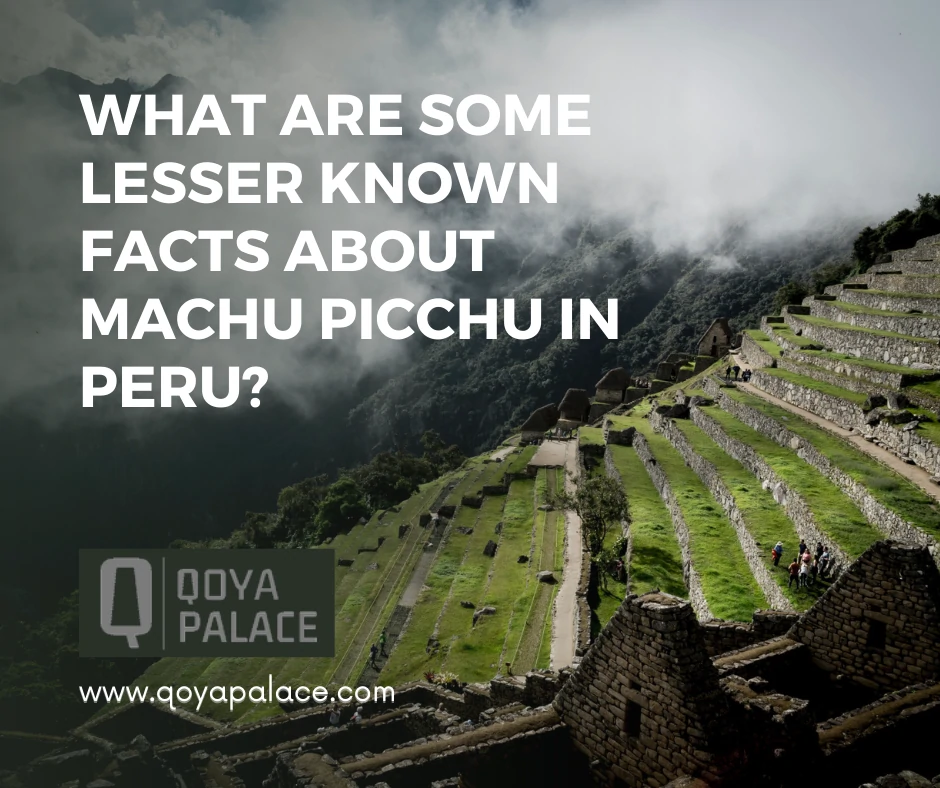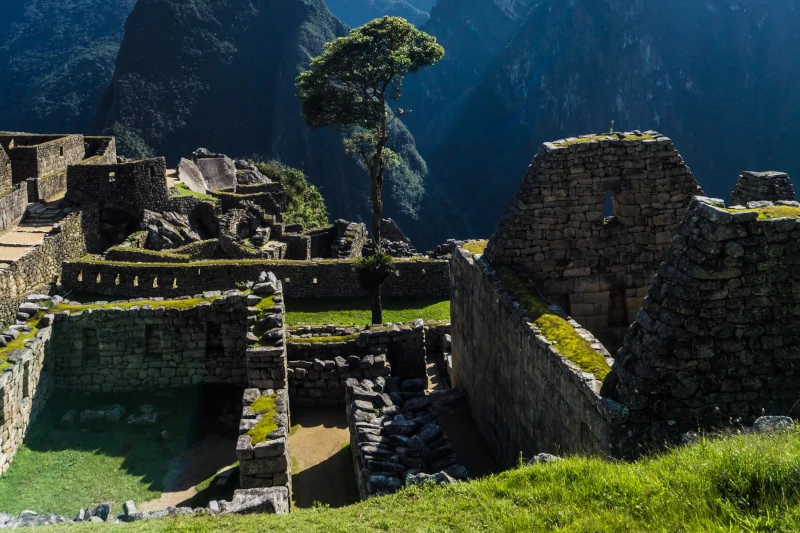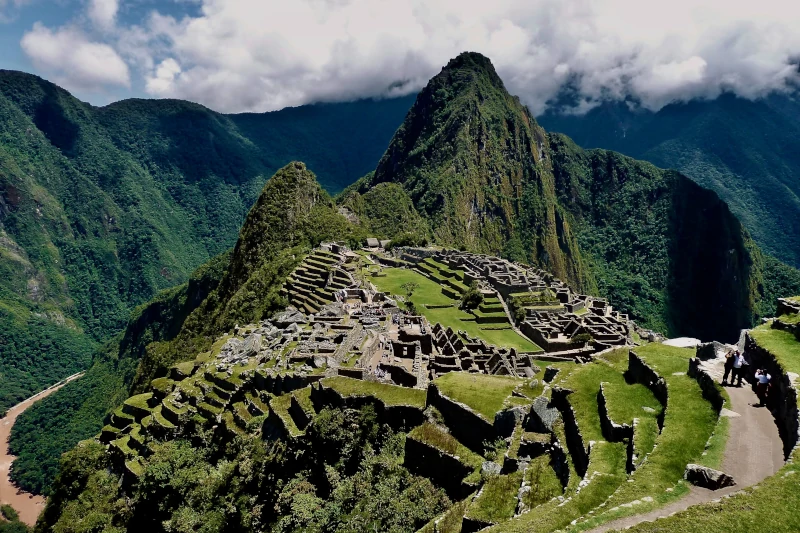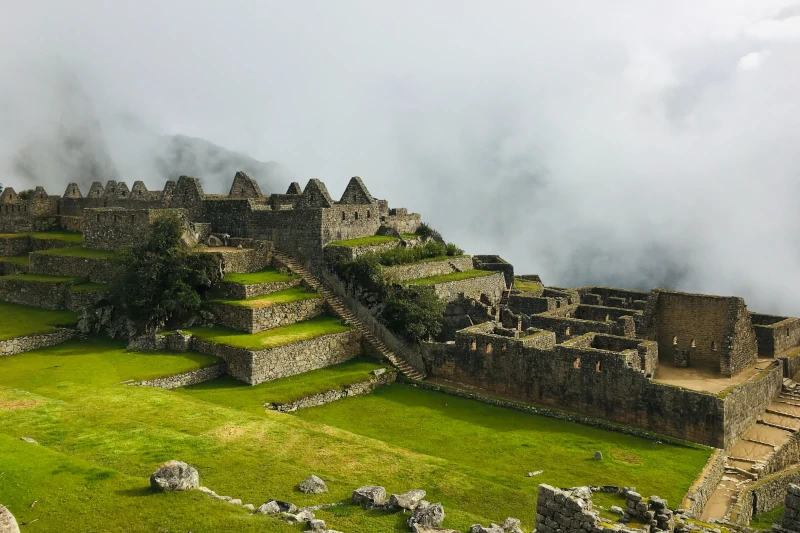
What are some lesser known facts about Machu Picchu in Peru?
Machu Picchu in Peru is an ancient Inca citadel located high in the Andes mountains. It is a marvel of engineering and architecture that has captured the imagination of people all over the world. This UNESCO World Heritage Site attracts millions of visitors every year. Visitors are drawn by its breathtaking views, mysterious history, and unique cultural significance.
Despite its popularity, there are still many lesser-known facts about Machu Picchu that are often overlooked. In this article, we will explore some of these fascinating details and shed light on the lesser-known aspects of this magnificent site. We will delve deeper into the secrets of Machu Picchu. Thus, we will uncover the hidden gems that make this ancient citadel so special.
Machu Picchu was rediscovered by accident
Machu Picchu was rediscovered by accident by American historian Hiram Bingham in 1911. Bingham was not initially looking for Machu Picchu. He was actually searching for the lost city of Vilcabamba, the last refuge of the Inca empire during the Spanish conquest.
Bingham had been studying Spanish chronicles and Inca legends to determine the location of Vilcabamba. Also, he had been exploring the region around Cusco, the former Inca capital, for several months. Then, he received a tip from a local farmer about the ruins of an ancient city high in the mountains.
Following this lead, Bingham and his team began a series of expeditions into the rugged Andean terrain. They braved treacherous mountain passes, dense forests, and raging rivers in search of the lost city. On July 24, 1911, Bingham and his team reached the top of a mountain and encountered the magnificent ruins of Machu Picchu.
Bingham was immediately struck by the beauty and grandeur of the site. Thus, he recognized its importance as a significant archaeological discovery. He spent several months exploring and documenting the ruins, taking photographs and collecting artifacts that he later brought back to the United States.
Bingham’s discovery of Machu Picchu was a major breakthrough in the study of Inca civilization. Also, it helped to bring global attention to the site. However, it was also controversial, as some Peruvians felt that Bingham had taken valuable artifacts out of the country without permission. Also, some argue that his excavation methods were damaging to the site.

The exact purpose of Machu Picchu is still unknown
The exact purpose of Machu Picchu is still unknown despite decades of research and archaeological excavation. While it is widely believed that Machu Picchu was built as a royal estate for the Inca emperor Pachacuti, there is still no conclusive evidence to support this theory.
One reason why the exact purpose of Machu Picchu remains a mystery is that the Incas did not have a written language. So, the records or accounts from the time of its construction are non-existent. Additionally, the site was never discovered by the Spanish conquistadors. Therefore, there are no historical accounts from the colonial period either.
Another reason why the purpose of Machu Picchu is still unclear is that the site is incredibly complex and contains a variety of structures. Among these structures are residential buildings, temples, agricultural terraces, and water management systems. Some researchers have proposed that Machu Picchu may have served as a spiritual center or a place of pilgrimage. Others have suggested that it was a military stronghold or a place where the Incas performed important rituals and ceremonies.
In addition to these challenges, there have also been disagreements among researchers about how to interpret the available evidence. Some have argued that the layout and design of the site suggest a specific function. On the other hand, other researchers suggest to pay more attention to the general features, such as the site’s location in the mountains and its alignment with astronomical events.

Its buildings follow astronomical alignments
Machu Picchu contains many buildings that are aligned with astronomical phenomena such as the solstices and equinoxes. These alignments suggest that the Incas had a sophisticated understanding of astronomy. So, they used this knowledge to inform the design and construction of their buildings.
One example of an astronomical alignment at Machu Picchu is the Intihuatana stone. The Intihuatana is a carved rock that was likely used as a sundial or astronomical observatory. The stone is situated on a platform and is aligned precisely with the movements of the sun during the solstices and equinoxes. During the winter solstice, for example, the sun’s rays shine directly onto the stone, casting no shadow.
Other buildings at Machu Picchu also show evidence of astronomical alignment. The Temple of the Sun, for example, contains a window that is aligned with the June solstice. So, when the sunlight crosses the window in June, it casts a shadow onto the central stone of the temple.
These astronomical alignments were likely not just decorative or symbolic, but had practical purposes as well. For example, the Incas may have used the solstice alignments to mark the beginning of important agricultural seasons. Also, they could have used these alignments to plan religious ceremonies and festivals. The precision of the alignments also speaks to the Incas’ advanced understanding of astronomy. It also showcases their ability to integrate this knowledge into their architecture and daily lives.

Machu Picchu was built without the use of wheels or iron tools
Machu Picchu was constructed by the Inca civilization without the use of wheels or iron tools. This feat of engineering and architecture is all the more impressive when one considers the difficult terrain of the region and the lack of advanced technology available to the Incas.
So, why did the Incas build Machu Picchu without the use of wheels or iron tools? The answer lies in the available resources and the technological limitations of the time. The Incas had access to a variety of building materials, including stone, adobe, and wood. However, they did not have access to large numbers of draft animals, such as horses or oxen, which would have made the use of wheels more practical. Instead, the Incas relied on human labor and ingenuity to transport materials and construct their buildings.
The Incas also did not have access to iron tools, which were not present in the region until the Spanish conquest. Instead, they used tools made of stone, bronze, and copper, which they fashioned into chisels, hammers, and other implements. While these tools were not as durable or efficient as iron tools, the Incas were able to use them to great effect in the construction of their buildings.
Despite these limitations, the Incas were able to build impressive structures at Machu Picchu, including stone terraces, temples, and palaces. They used a technique called ashlar masonry, in which stones were cut and fitted together with great precision, without the use of mortar. This technique allowed for the construction of strong and durable buildings that could withstand earthquakes and other natural disasters.





